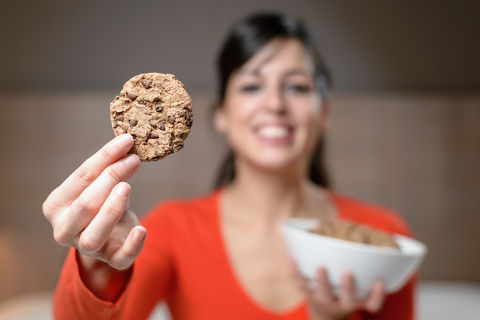Do You Know How to Manage Your Hunger When You’re Trying to Lose Weight?
Here is a question I was recently asked by one of my clients:
“I am trying to lose weight by cutting down and thinking about what I eat. However, I don’t know what to do when I feel hungry.
If I choose the sensible option, I’m not satisfied and if I choose something else, I either end up not losing any weight or putting some on! What’s the solution?”
What should you do when you’re trying to lose weight, and you feel hungry? This is a common situation that many people come across. And working out a good response to hunger is crucial to successful weight loss.
Cutting back on calories can make food cravings nearly impossible to ignore. That’s why smart dieters eat plenty of fiber. Food with fiber can help you to feel full longer so that you don’t feel the urge to eat as often. But there are two kinds of fiber to choose from: soluble and insoluble. Each type of fiber offers benefits if you’re trying to lose weight.
Different Kinds of Fiber
Fiber is a non-digestible carbohydrate that comes from plant-based foods. Our bodies don’t have the enzyme necessary to break down the fiber that we eat. So it passes through our system without getting fully digested. Dietary fiber is fiber that occurs naturally in the food we eat, like in beans or whole grains. Functional fiber is the kind of fiber that is added to food during manufacturing or that we take in the form of a supplement. Fiber can also be soluble or insoluble.
Soluble Fiber for Weight Loss
Soluble fiber dissolves in water. Oatmeal, for example, is a popular food that contains soluble fiber. Soluble fiber binds with water to create a viscose gel in your stomach. Many forms of soluble fiber are also called high-viscosity fiber. You’ll find soluble fiber in many citrus fruits, barley and legumes.
So why eat soluble fiber for weight loss? Foods that contain soluble fiber help you to feel full for a longer period of time.
This is because it empties from your stomach at a slower rate than other foods. Soluble fiber also helps to slow the rate at which sugar is released into your bloodstream so that you maintain a steady energy level after eating.
Insoluble Fiber for Weight Loss
Insoluble fiber does not dissolve in water and our bodies don’t digest it.
So it passes through your body in tact. Insoluble fiber is also called low-viscosity fiber. Foods that contain insoluble fiber are whole grains, bran and many vegetables.
So why eat insoluble fiber? If you’re trying to lose weight, this food adds bulk to your diet and fills your belly (and your plate!) without adding calories to your waistline. Dieters who eat enough insoluble fiber may also benefit from improved regularity and less constipation.
The Best Fiber Foods for Weight Loss
Both types of fiber provide health benefits and can make weight loss easier. So if you’re trying to lose weight, choose foods from both groups in order to get the right amount of fiber each day. But keep in mind, that some foods with fiber also contain a lot of calories and fat.
Granola, for example, is high in fiber but usually also contains a lot of sugar and fat which increases the overall calorie count. Whole grain cereal is another fiber-rich food that can be a diet disaster.
While a single serving of cereal can be a diet-friendly breakfast, it’s one of the most popular foods we overeat so portion control is essential. Avocados are high in fiber, but also high in fat and calories.
The best fiber foods for weight loss are those that are lower in calories and fat. That way you can eat more food to manage your hunger and control your cravings, but still keep your calorie count in control.
Request a complimentary first session at Vertex Fitness, Voted the BEST Personal Training Studio on the Main Line
Click HERE and we will schedule a session to try it yourself








kelvin moore
May 3, 2017 8:16 amAshvini, thank you so much for taking time to post such helpful information. I am in the health care field. This information on fiber was so valuable. I wish you much continued success.